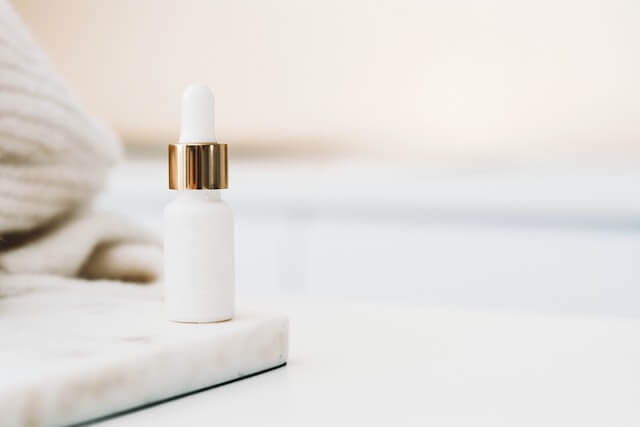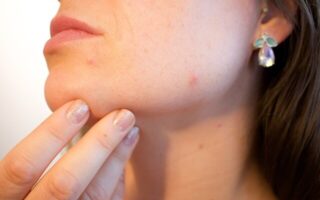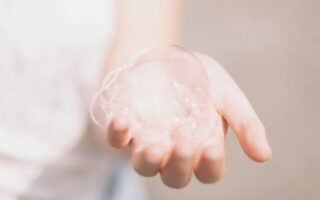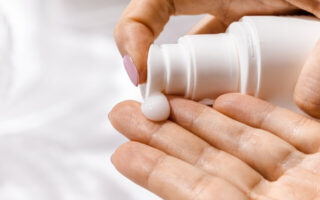You’ve just stumbled upon one of the most frequently asked questions in the realm of skincare – “Can I use Paula’s Choice BHA everyday?” As a professional, I’m here to shed light on this intriguing topic.
The answer isn’t as straightforward as you might think, and it largely depends on your skin type and condition. In this article, we’ll delve into the science behind BHA, explore the benefits and potential risks of daily use, and provide expert advice on how to incorporate Paula’s Choice BHA into your skincare routine effectively. So, if you’re ready to achieve that radiant, blemish-free skin you’ve always dreamed of, keep reading!
But before I answer this question, you must first understand what exactly Paula’s Choice BHA is.
What is Paula’s Choice BHA?
Paula’s Choice BHA (Beta Hydroxy Acid), Liquid Exfoliant is a chemical exfoliant used to exfoliate the skin. Beta hydroxy acids (BHAs) in the exfoliant are non-abrasive and soothing, which is gentler than cleansing brushes or soft washcloths and scrubs. It penetrates deep into the pores, clearing out all the gunk and grime that can lead to breakouts. But it’s not just about what it removes; it’s also about what it leaves behind. BHA helps to smooth and even out the skin, leaving it looking fresh and radiant.
The skincare product is formulated in the optimal pH range of 3.2-3.8, free of fragrance and alcohol. This ensures it can penetrate the skin deeply and exfoliate dead skin cells and debris effectively, revealing healthy and smooth skin underneath.
This liquid product is a bestselling cult classic in the realm of American skincare. It’s a cult favorite, and for good reason. It has taken the beauty world by storm. Imagine a magic potion that gently exfoliates your skin, unclogs pores, and reduces redness and inflammation.
Paula’s Choice BHA Ingredients
Paula Choice BHA is made with a cocktail of potent ingredients, each with a specific role to play. The main ingredient is Salicylic Acid, a Beta Hydroxy Acid known for its ability to penetrate deep into the pores. Butylene Glycol, a common skincare ingredient, is also present, acting as a solvent and a humectant that helps retain moisture.
But that’s not all. The formula also boasts the inclusion of Green Tea Extract, a potent antioxidant that’s derived from the Camellia Oleifera plant. This ingredient is a powerhouse of anti-aging antioxidants that help protect the skin from environmental damage. Lastly, Sodium Hydroxide is used in the formula to balance the pH and enhance the effectiveness of other ingredients.
| Ingredients | Purpose |
| Water | Solvent |
| Methylpropanediol | Hydration |
| Butylene Glycol | Texture Enhancer |
| Salicylic Acid | Exfoliant |
| Polysorbate 20 | Cleansing Agent |
| Camellia Oleifera Leaf Extract | Antioxidant |
| Sodium Hydroxide | pH Adjuster |
| Tetrasodium EDTA | Chelating Agent |
Please note that this list might not be exhaustive and the formulation can change over time. Always check the product packaging for the most accurate and up-to-date ingredient lists.
Salicylic Acid and Its Effect on the Skin
Salicylic Acid, a type of Beta Hydroxy Acid, is a key ingredient in many skincare products, and it’s easy to see why. This acid works like a charm to exfoliate the skin, unclogging pores and sloughing off dead skin cells. It’s like a deep-cleaning service for your skin, getting rid of all the unwanted debris that can lead to breakouts.
But it’s not just about what Salicylic Acid removes; it’s also about what it adds. This acid helps to stimulate the production of collagen, improving the skin’s texture and appearance. However, like all good things, it’s best used in moderation. Overuse can lead to dryness and irritation, so it’s important to find a balance that works for your skin. If you have a salicylate allergy, it’s best to avoid products containing Salicylic Acid.
Sodium Hydroxide in Paula’s Choice BHA Liquid Exfoliant
Sodium Hydroxide may not be the star of the show, but it plays a crucial role in the effectiveness of Paula’s Choice BHA Liquid Exfoliant. This ingredient is used to adjust the pH of the product, ensuring that the Salicylic Acid can work its magic without causing unnecessary irritation. It’s a behind-the-scenes player, but it’s one that deserves recognition for its role in making this product a skincare superstar.
Green Tea Leaf Extract in Paula’s Choice BHA Liquid Exfoliant
Green Tea Leaf Extract is another key ingredient in Paula’s Choice BHA Liquid Exfoliant. This extract, derived from green tea leaves, is a potent antioxidant that helps to protect the skin from environmental damage. It’s like a shield, warding off the harmful effects of pollution and UV rays. But it’s not just about protection; Green Tea Extract also has anti-inflammatory properties, helping to soothe and calm the skin. It’s a skincare superhero, fighting off the bad guys and keeping your skin safe and sound.
How Does BHA Work in Exfoliating the Skin?
Imagine your skin as a bustling city. The pores are like houses, and sometimes, they get cluttered with dead skin cells – the unwanted residents. This is where BHA comes in. It acts like a dedicated cleaning crew, working tirelessly to clear out the clutter and restore order.
BHA promotes the natural exfoliation process, helping your skin shed dead cells more effectively. Regular exfoliation with BHA can keep your skin city running smoothly, preventing the build-up that can lead to issues like clogged pores and dull skin. It’s a gentle yet effective form of acid exfoliation that can help maintain the skin’s natural balance.
What Does BHA Do For Your Skin?
Now that we’ve seen how BHA works, let’s talk about the benefits it can bring to your skin. Ever looked in the mirror and wished for a smoother skin tone, fewer wrinkles, or less visible pores? BHA might just be the answer to your skin prayers.
By exfoliating the skin and unclogging pores, BHA can help reduce the appearance of enlarged pores and improve skin texture. It’s like a mini-renovation for your skin, smoothing out uneven texture and tone. If you’re dealing with redness, sun damage, rosacea-prone skin or blemish-prone skin, BHA can help address these concerns too.
For those with acne-prone, oily, and bumpy skin, BHA can be a game-changer. It helps manage skin sensitivity while promoting healthier, blemish-free skin. Remember, the journey to healthy skin is a marathon, not a sprint. But with BHA in your skincare arsenal, you’re well-equipped for the journey ahead.
Now, onto the question.
Can You Use Paula’s Choice BHA Everyday?
Yes, you can use Paula’s Choice BHA everyday. Even the Paula Choice website says the product is safe for daily use.
But, when it comes to skincare, one size doesn’t fit all. There are certain considerations you need to take into account. So, can you use it every day?
Well, it depends on your skin type and how your skin responds to this type of liquid exfoliant. For some, daily use may work wonders, especially for those with skin prone to acne. The BHA Liquid Exfoliant Lotion can help unclog pores and reduce breakouts, making it a valuable addition to your daily skincare routine. However, for others, especially those with sensitive skin, daily use might be too harsh. It could do more harm than good.
So, I advise using it once or twice a week for someone who is just getting started with the product and observing how your skin reacts over 2-4 weeks. If all goes well, you can gradually increase the frequency. But in case of any irritation, stop using the product immediately and consult a doctor. It is always better to do a patch test on a small skin area before using any new product, especially if you have sensitive skin.
Note: Don’t forget to use sunscreen product if you use an exfoliant in the morning.
How Often Should I Be Using Paula Choice BHA?
Most dermatologists recommend using BHA products 2-3 times per week. However, this isn’t a hard and fast rule. It’s more of a starting point. This frequency allows your skin to acclimate to the product and helps prevent over-exfoliation, which can lead to dryness and irritation. From there, you can adjust the frequency based on how your skin responds. It’s all about finding that sweet spot where your skin feels clean, fresh, and rejuvenated without being stripped of its natural oils.
Can I Use Paula’s Choice BHA In The Morning?
Yes, you can use Paula Choice BHA in the morning. However, it’s crucial to follow up with a broad-spectrum sunscreen. BHA can make your skin more sensitive to the sun, and we all know that unprotected sun exposure is a big no-no in skincare. So, if you’re a morning person, go ahead and apply it then, but don’t forget your SPF. If you’re more of a night owl, applying it in the evening works just as well.
When Should You Take BHA In A Routine?
Incorporating BHA into your regular skincare routine can be as seamless as adding a new book to your reading list. BHA, like an exfoliating toner, would come after cleansing but before moisturizing. It prepares your skin for the next steps, allowing subsequent skin care products to penetrate more effectively. But remember, you might not need to use BHA every day. Start with a few times per week and adjust based on how your skin responds.
Benefits of using Paula’s Choice BHA
Revitalizing Skin Texture:
Paula’s Choice BHA Liquid Exfoliant is a cult classic in the skincare world, renowned for its ability to refine and revitalize skin texture. This liquid exfoliant, rich in Salicylic Acid (a Beta Hydroxy Acid), works wonders in promoting quicker skin turnover, leading to smoother, glowing skin. It’s like giving your skin a fresh start every time you use it.
Pore Size Reduction:
One of the key benefits of this BHA Liquid is its ability to minimize the appearance of pores. The Salicylic Acid penetrates deep into the pores, clearing them out and reducing their size. It even helps individuals with keratosis pilaris. Within 2-4 weeks of consistent use, you’ll notice a significant difference in your pore size.
Exfoliation and Acne Control:
For those with acne-prone skin type, this BHA Liquid Exfoliant is a game-changer. The chemical exfoliant properties of Salicylic Acid help to clear out excess oil and dead skin cells that can lead to acne. It’s the perfect balance of effective exfoliation without irritating the skin.
Anti-Aging Properties:
Paula’s Choice BHA is not just for acne and pores; it’s also a potent weapon against wrinkles. The exfoliation process encourages the production of new skin cells, reducing the appearance of wrinkles, fine lines, dark spots and hyperpigmentation. It’s a skincare product that caters to both acne-prone and mature skin types.
Anti-Inflammatory and Anti-Bacterial Properties:
Salicylic Acid is known for its anti-inflammatory and anti-bacterial properties. It can help calm redness and inflammation associated with acne, making it a suitable choice for sensitive, acne-prone skin.
Improved Makeup Application:
By promoting smoother, clearer skin and reducing the appearance of pores, Paula’s Choice BHA Liquid Exfoliant can also improve your makeup application. Your foundation will glide on more smoothly over exfoliated, moisturized skin.
Balanced Skincare Routine:
Incorporating this BHA Lotion Exfoliant into your daily skincare routine can help maintain a perfect balance of moisturizing and exfoliating. It’s a medium high-end skin brand product that fits seamlessly into advanced and beginner skincare routines.
In short, Paula’s Choice BHA Liquid Exfoliant is a versatile skincare product that offers a wide variety of benefits, from pore size reduction to anti-ageing properties. It’s a worthy addition to any skincare routine, whether you’re a beginner or a seasoned skincare enthusiast.
Benefits of BHA for Different Skin Types
Paula’s Choice’s BHA offers different benefits for different skin types.
Oily Skin
Let’s start with oily and acne-prone skin, a skin type that often struggles with enlarged pores and a shiny complexion. BHA, particularly in the form of Salicylic Acid, is a game-changer for oily skin. Acting as a chemical exfoliant, it penetrates deep into the pores, clearing out excess oil and reducing pore size. The result? Clearer skin with a less oily appearance.
Dry Skin
But what about dry skin? You might be thinking, “Isn’t an acid too harsh for my already parched skin?” Well, not necessarily. BHA, when used in moderation, can actually help improve the skin’s texture and reduce the appearance of wrinkles. It promotes quicker skin turnover, revealing a fresh, glowing layer underneath. And don’t worry, there are plenty of moisturizing skincare products that contain BHA, striking the perfect balance between exfoliation and hydration.
Combination Skin
Now, let’s talk about combination skin. This skin type is a bit of a tightrope walk, with some areas being oily and others dry. The beauty of BHA is that it can cater to both. It helps regulate oil production in the T-zone, while gently exfoliating dry patches for a smoother skin texture. A BHA Liquid Exfoliant or a BHA Exfoliant Skin product can be a great addition to your daily skincare routine.
Sensitive Skin
Sensitive skin, on the other hand, requires a little more caution. While BHA has anti-inflammatory properties that can calm redness, it’s important to introduce it slowly to avoid irritating the skin. Start with a lower-concentration product, like a hydrating toner, and monitor your skin’s reaction.
Comparing BHA with Other Types of Exfoliants
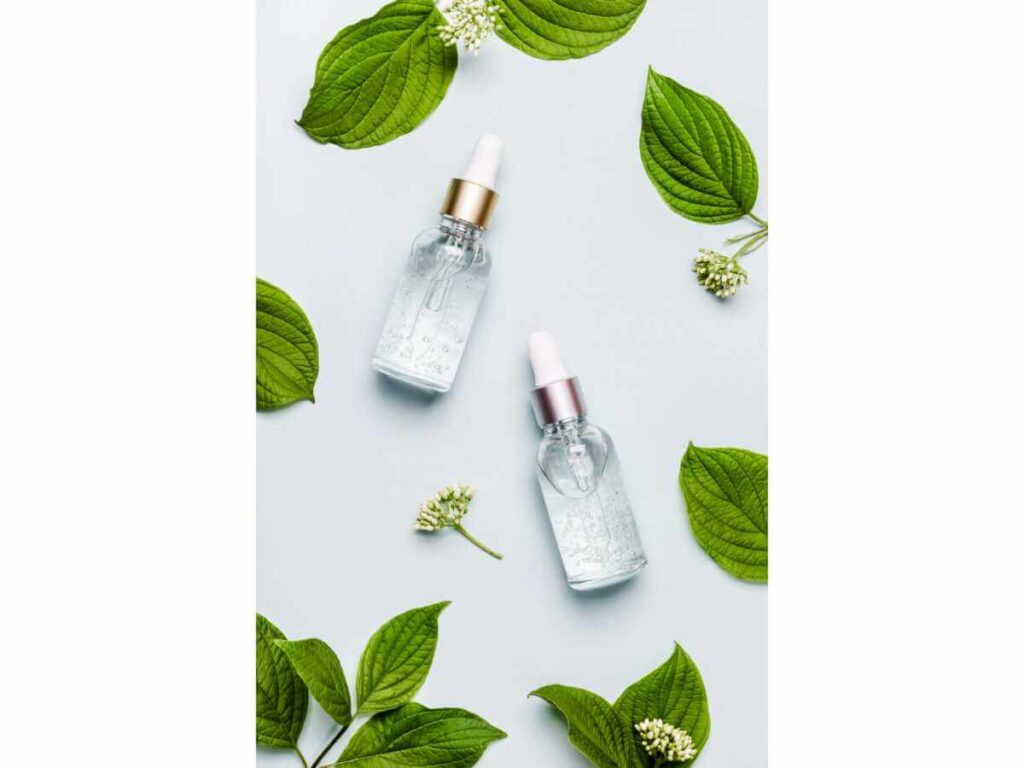
Navigating the world of skincare acids can be a bit like walking through a minefield, right? Alpha Hydroxy Acids (AHA), Beta Hydroxy Acids (BHA), hyaluronic acid, ascorbic acid, azelaic acid – the list goes on. But don’t worry, I’m here to guide you through the do’s and don’ts of these potent ingredients.
Firstly, let’s talk about AHA and BHA. These organic acids are fantastic for exfoliation. AHAs, like glycolic acid and lactic acid, work on the skin’s surface, making them great for dry skin. BHAs, on the other hand, penetrate deeper, making them perfect for oily, acne-prone skin. Unlike physical scrub exfoliants, which can be harsh and abrasive, BHA Liquid Exfoliant gently dissolves the bonds between dead skin cells, allowing them to be easily washed away.
Next up is hyaluronic acid, a superstar ingredient for hydration. It can hold up to 1000 times its weight in water, making it a must-have in any skincare routine. But what about ascorbic acid, also known as vitamin C? It’s a powerful antioxidant that can brighten skin and combat signs of ageing.
And let’s not forget azelaic acid. This lesser-known acid is a real gem for reducing inflammation and evening out uneven skin tone. So, whether you’re creating an acid wish list or looking for the perfect acid toner or Acid Masque, remember to choose the right acids for your skin type and always use them responsibly.
How to Apply Paula’s Choice BHA?
Paula’s Choice liquid exfoliant is a game-changer in skincare routines, and knowing how to use it correctly can make all the difference.
Step-by-Step Guide to applying the product
Preparation is Key:
Before you even think about applying Paula’s Choice BHA Liquid Exfoliant, make sure your face is clean and dry. This is not just a suggestion, it’s a necessity. Why, you ask? Well, imagine trying to paint a masterpiece on a dirty canvas. It just wouldn’t work, right? The same principle applies to your skin.
Less is More:
When it comes to applying Paula’s Choice BHA Liquid, remember that less is more. You don’t need to drench your face in the product. A small amount goes a long way.
Application Technique:
Now, let’s talk about the actual application. Pour a small amount of the BHA Liquid Exfoliant onto a cotton pad. Then, gently swipe it across your face, avoiding the eye area. It’s as simple as that.
Patience is a Virtue:
After applying the BHA Liquid Exfoliating toner, wait for it to absorb into your skin. Don’t rush this process.
Follow Up:
Once the BHA Liquid Exfoliant has fully absorbed, follow up with your regular skincare routine. This could include moisturizer, sunscreen, or other products you typically use.
How Much Paula’s Choice BHA to Use?
To determine the appropriate amount of BHA to use, start by understanding your skin’s sensitivity and tolerance. Begin with a small amount, such as a few drops, travel size or a dime-sized portion, and observe how your skin reacts. If your skin tolerates it well, you can gradually increase the amount over time.
It’s worth noting that a little goes a long way with Paula’s Choice BHA Liquid Exfoliant. The formula is highly concentrated and has a liquid consistency, so you don’t need to apply a large quantity for effective results. Using too much product may lead to potential skin irritation or dryness. Remember, it’s always better to start with a conservative amount and adjust as needed.
What Should I Apply After Paula’s Choice BHA?
After applying Paula’s Choice BHA Liquid Exfoliant, it’s essential to follow up with suitable skincare products to maximize its benefits and maintain a healthy complexion.
Moisturizer:
One of the key steps after using any exfoliating product is moisturization. Opt for a moisturizer that suits your skin type and addresses your specific concerns. Look for ingredients like hyaluronic acid or ceramides, which help hydrate and nourish the skin. Gently massage the moisturizer onto your face and neck, promoting a smooth and supple texture.
SPF Protection:
Sunscreen is a vital component of any skincare routine. After applying the moisturizer, make sure to use a broad-spectrum sunscreen with at least SPF 30. This step is crucial as exfoliating products can increase sun sensitivity. Protecting your skin from harmful UV rays helps prevent premature aging, sun damage, and other skin concerns.
Additional Skincare Products:
Depending on your specific needs, you may incorporate other skincare products such as serums, antioxidants, chemical peels, or targeted spot treatments. These products can address concerns like hyperpigmentation, fine lines, or even hormonal acne. Choose products that complement your skin type and concerns, and apply them after the moisturizer, following the instructions provided.
Remember, everyone’s skincare routine may differ based on individual needs and preferences.
Paula’s Choice BHA Before Or After Moisturizer
I recommend my clients to apply Paula’s Choice BHA Liquid Exfoliant before their moisturizer. This allows the exfoliant to penetrate the skin and work its magic effectively. Here’s why:
Exfoliation:
Paula’s Choice BHA Liquid Exfoliant contains salicylic acid, a beta-hydroxy acid that works to exfoliate the skin. By applying it before moisturizer, you allow the exfoliant to remove dead layers of skin cells, unclog pores, and promote cell turnover. This prepares your skin to better absorb the moisturizer and other skincare products that follow.
Hydration:
BHA exfoliants, although effective in removing dead skin cells, can also have a drying effect on the skin. Moisturizing after using Paula’s Choice BHA Liquid Exfoliant helps to restore moisture and prevent any potential dryness or irritation. It keeps your skin hydrated and supple.
Barrier Function:
Moisturizer acts as a protective barrier on the skin’s surface, sealing in moisture and preventing water loss. This is particularly important after using exfoliating products like BHA, as they can disrupt the skin’s natural barrier. By moisturizing, you help to maintain a healthier skin barrier, improving its overall health and resilience.
Soothing and Calming:
Some individuals may experience mild redness or sensitivity after using BHA. Moisturizer can help to soothe and calm the skin, reducing any potential irritation. Look for moisturizers with gentle and soothing ingredients, such as aloe vera or chamomile extract, to provide additional comfort to your skin.
Penetration:
BHA exfoliants are known for their ability to penetrate the pores and target congestion deep within the skin. By applying the BHA Liquid Exfoliant first, you ensure that it can effectively reach the areas where it’s needed most. This helps in reducing blackheads, whiteheads, and other blemishes.
Lightweight Formula:
Paula’s Choice BHA Liquid Exfoliant has a lightweight texture that allows for quick absorption. Applying it before moisturizer ensures that it can penetrate the skin without any barriers or occlusive layers. This way, the active ingredients can work directly on your skin without interference.
After applying Paula’s Choice BHA Liquid Exfoliant, give it a few minutes to fully absorb into your skin. Then, follow up with your moisturizer. Choose a moisturizer that suits your skin type and provides adequate hydration. Gently massage the moisturizer into your skin using upward motions, allowing it to lock in moisture and create a protective barrier.
How to incorporate Paula’s Choice BHA into a skincare routine?
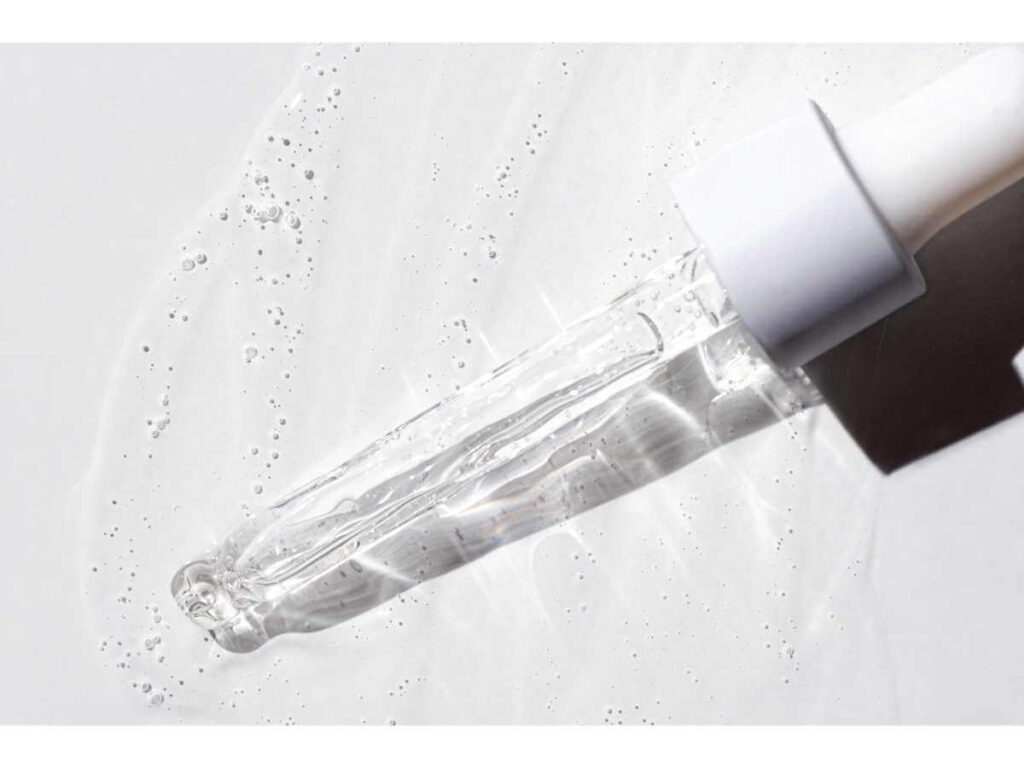
Paula’s Choice BHA Liquid Exfoliant is a must-have addition to your daily skincare regime. Let me guide you on how to incorporate it into your regular skincare routine for optimal results.
Step 1: Cleanse Your Face
Start by cleansing your face with a gentle cleanser suitable for your skin type. This will ensure that your skin is free from dirt, oil, and makeup, allowing the BHA exfoliant to penetrate effectively.
Step 2: Apply Paula’s Choice BHA Liquid Exfoliant
After cleansing, take a small amount of Paula’s Choice BHA Liquid Exfoliant onto a cotton pad or your fingertips. Gently apply it to your face, avoiding the eye area. Allow the product to absorb into your skin before moving on to the next step.
Step 3: Follow with Moisturizer
Once the BHA exfoliant has been absorbed, follow up with your favorite moisturizer. This will help replenish moisture and maintain hydration, especially after the exfoliation process. Choose a moisturizer suitable for your skin type to ensure optimal results.
Step 4: Sun Protection is Key
It is crucial to protect your skin from harmful UV rays, especially when using exfoliating products. Apply a broad-spectrum sunscreen with an SPF of 30 or higher as the final step in your skincare routine. This will shield your skin from sun damage and maintain the results of your BHA exfoliation.
Can I Use Paula’s Choice BHA With Retinol?
Paula’s Choice BHA Liquid Exfoliant and Retinol are two popular skincare products that can complement each other when used correctly. BHA (beta-hydroxy acid) is known for its ability to penetrate pores and exfoliate deep within, making it effective for addressing acne, blackheads, and congested skin. Retinol, on the other hand, offers numerous anti-aging benefits and can help improve skin texture and reduce the appearance of wrinkles.
The good news is that you can use Paula’s Choice BHA Liquid Exfoliant with retinol, but it’s essential to introduce them gradually and consider your skin’s sensitivity. Start by using them on separate days to assess how your skin responds. For example, you can incorporate BHA into your routine on Monday, Wednesday, and Friday, and use retinol on Tuesday, Thursday, and Saturday. This allows your skin to benefit from the unique properties of each product without overwhelming it.
However, it’s crucial to note that both BHA and retinol can cause dryness or irritation, especially when used together or if you have sensitive skin. To minimize the risk of adverse reactions, ensure your skin is well-moisturized after applying these products. Additionally, always follow the instructions provided by the manufacturer and consider consulting with a dermatologist for personalized advice.
Can I Use Paula’s Choice BHA With Vitamin C?
Paula’s Choice BHA Liquid Exfoliant and vitamin C are both valuable additions to a skincare routine, offering different benefits for the skin. BHA exfoliants like Paula’s Choice BHA Liquid can help unclog pores and improve skin texture, while vitamin C, a popular skincare ingredient, is known for its antioxidant properties and ability to brighten the complexion.
Using Paula’s Choice BHA Liquid Exfoliant with vitamin C is generally safe and can provide enhanced results. However, it’s important to consider the concentration and formulation of the products you choose. Ascorbic acid, the most common form of vitamin C, can be unstable at low pH levels and may not work optimally when combined with BHA exfoliants.
To ensure compatibility, look for vitamin C products with a pH level below 3.5, as this is the range where ascorbic acid is most stable and effective. It’s also advisable to apply BHA and vitamin C products at separate times of the day to allow each product to work optimally without interference.
For example, you can incorporate Paula’s Choice BHA Liquid Exfoliant into your morning routine and follow it with a vitamin C serum or moisturizer. Alternatively, you can use BHA in the evening and vitamin C in the morning, allowing each product to provide its unique benefits without compromising their effectiveness.
As always, it’s crucial to pay attention to your skin’s response and adjust your routine accordingly. If you experience any adverse reactions or have specific concerns, consult with a dermatologist for personalized advice on combining these products.
How Long Does Paula’s Choice BHA Take to Work?
Patience is key when incorporating skincare products into your routine, including Paula’s Choice BHA Liquid Exfoliant. The effectiveness of any skincare product can vary depending on individual factors such as skin type, concerns, and consistency of use.
In general, it may take approximately 2-4 weeks of regular use to notice visible improvements when using Paula’s Choice BHA Liquid Exfoliant. However, for more significant results, such as a reduction in acne breakouts or improvement in skin texture, it may take 4-6 weeks or even longer.
Consistency is essential when using BHA exfoliants. Incorporate the product into your skincare routine as directed by the manufacturer, typically once or twice daily after cleansing. Over time, the BHA exfoliant will work to unclog pores, promote cell turnover, and reveal a smoother and more refined complexion.
It’s important to note that individual results may vary, and some people may experience faster or slower improvements depending on their skin’s unique characteristics. Additionally, it’s advisable to avoid combining BHA exfoliants with other harsh or potentially irritating products, as this can hinder the overall effectiveness and potentially cause adverse reactions.
Possible side effects of using BHA daily
Increased Skin Sensitivity:
Using BHA, specifically Salicylic Acid, daily as a liquid exfoliant can lead to increased skin sensitivity, especially for individuals with sensitive skin. BHA works by exfoliating the skin’s surface and removing dead skin cells. However, frequent use can cause the skin to become more prone to redness, irritation, and dryness. It is essential to assess your skin’s tolerance and start with a lower concentration of BHA to minimize the risk of adverse reactions.
Potential for Excessive Dryness:
Excessive use of BHA, especially if applied daily, can make the skin dry. BHA has the ability to penetrate deep into the pores, removing excess oil and unclogging them. While this can be beneficial for individuals with acne-prone skin, using BHA excessively can disrupt the skin’s natural moisture balance, leading to dry and flaky patches. It is crucial to moisturize the skin adequately and consider reducing the frequency of BHA application if dryness occurs.
Risk of Skin Irritation:
Some individuals may experience skin irritation when using BHA daily, particularly if they have a pre-existing sensitivity to salicylates or a known salicylate allergy. BHA is a salicylic acid derivative, and those allergic to salicylates may develop redness, itching, or a rash upon application. If you have a history of allergic reactions to salicylates or are unsure about your sensitivity, it is advisable to consult a dermatologist before incorporating BHA into your daily skincare routine.
Potential Negative Impact on Skin Barrier:
Using BHA daily, especially in high concentrations, can potentially compromise the skin barrier function. The skin barrier acts as a protective barrier against external aggressors, locking in moisture and preventing irritants from entering. Overuse of BHA may disrupt this barrier, leading to increased water loss, increased skin sensitivity, and a compromised ability to defend against environmental factors. It is crucial to use BHA in moderation and consider products with lower concentrations to minimize the risk of damaging the skin barrier.
Interaction with Other Skincare Products:
When incorporating BHA into your skincare routine, it is essential to consider its interaction with other products. BHA, particularly in liquid form, may not be compatible with certain skincare ingredients, such as vitamin C (ascorbic acid) or azelaic acid. These combinations can lead to decreased effectiveness or potential skin irritation. It is advisable to consult reputable skincare sources or a dermatologist to ensure the compatibility of BHA with other products on your skincare “acid wish list.”
Not Suitable for All Skin Types:
While BHA can be beneficial for many individuals, it may not be suitable for all skin types. Those with extremely sensitive or reactive skin may find BHA too harsh and irritating, even when used in moderation. It is essential to understand your skin type and its specific needs before incorporating BHA into your skincare routine. If you have concerns or doubts, consult with a dermatologist who can provide personalized advice based on your skin’s characteristics.
Recommendations for Avoiding These Side Effects
To minimize the possible side effects associated with using BHA (Beta hydroxy acid) daily, consider the following recommendations:
Patch Test and Gradual Introduction:
Before incorporating a BHA product, such as the Paula’s Choice BHA Liquid Exfoliant, into your daily skincare routine, perform a patch test. Apply a small amount of the product on a discreet area of your skin and observe for any adverse reactions, such as redness or irritation. If no negative reactions occur, gradually introduce the BHA product by using it once or twice a week initially, and then slowly increase the frequency over time.
Choose the Right Concentration:
Select a BHA product with an appropriate concentration for your skin type and concerns. Higher concentrations of BHA may be too strong for sensitive or acne-prone skin, leading to increased redness and irritation. Start with a lower concentration, such as 1% or 2%, and assess how your skin responds before considering higher strengths.
Use BHA in Moderation:
To avoid excessive dryness and potential damage to the skin barrier, it is essential to use BHA in moderation. Daily use of BHA may not be necessary for everyone. Instead, consider incorporating it into your skincare routine every other day or a few times a week, depending on your skin’s tolerance and needs.
Consider Alternating with Other Exfoliants:
To prevent over-exfoliation and further skin sensitivity, consider alternating BHA with other types of chemical exfoliants. For example, you can use an AHA (Alpha hydroxy acid) toner or a gentle physical exfoliant on days when you are not using BHA. This approach helps maintain a balance in exfoliation and reduces the risk of irritation.
Pair BHA with Soothing Ingredients:
When using BHA, it is beneficial to incorporate soothing ingredients into your skincare routine. Look for products that contain hydrating and calming ingredients like hyaluronic acid, aloe vera, or chamomile extract. These ingredients can help counteract any potential dryness or irritation caused by BHA and maintain the overall health of your skin.
Consult a Dermatologist:
If you have particularly sensitive or reactive skin, or if you are unsure about incorporating BHA into your routine, it is advisable to seek guidance from a dermatologist. They can assess your skin type, address any specific concerns, and provide personalized recommendations for using BHA or alternative skincare options.
When Should You Not Use BHA?
There are certain situations when BHA may not be suitable for everyone. Here are some instances where you should exercise caution or avoid using BHA:
Sensitive or Irritated Skin:
If you have highly sensitive or irritated skin, it’s advisable to avoid using BHA. This acid can be potent and may further aggravate your skin, leading to redness, inflammation, or discomfort. Instead, opt for gentler alternatives that cater to sensitive skin types.
Allergic Reactions:
Individuals with a known allergy to salicylates should refrain from using products containing BHA. Allergic reactions can manifest as itching, rashes, hives, or even difficulty in breathing. It’s essential to read product labels carefully and consult with a dermatologist if you suspect any allergies.
Open Wounds or Broken Skin:
BHA has the potential to cause stinging or burning sensations when applied to open wounds or broken skin. It’s crucial to allow your skin to heal completely before incorporating BHA into your skincare routine. Consult with a healthcare professional for guidance on wound care.
Pregnancy or Breastfeeding:
Although limited research suggests that topical use of BHA is unlikely to have adverse effects during pregnancy or breastfeeding, it’s best to err on the side of caution. Consult your obstetrician or dermatologist for personalized advice regarding the use of BHA during this period.
Interaction with Certain Medications:
Some medications, such as blood thinners or oral retinoids, may interact with BHA and increase the risk of skin irritation or sensitivity. If you are currently on any medication, it’s essential to inform your healthcare provider before incorporating BHA into your skincare routine.
Safety Precautions When Using Paula’s Choice Products
To ensure optimal results and minimize the risk of adverse reactions, it’s important to follow these safety precautions when using Paula’s Choice products:
Patch Test:
Before applying any new Paula’s Choice product to your face or body, perform a patch test. Apply a small amount of the product on a discreet area of your skin, such as the inner forearm or behind the ear. Observe for any signs of redness, itching, or irritation for at least 24 hours. If any negative reactions occur, discontinue use.
Follow Instructions:
Read and follow the product instructions provided by Paula’s Choice. Each product may have specific guidelines for application, frequency, and duration. Adhering to these instructions will ensure that you use the products correctly and achieve the desired benefits.
Start Slowly:
When introducing a new Paula’s Choice product into your skincare routine, start with a lower concentration or frequency of use. This allows your skin to adjust and minimizes the chances of irritation. Gradually increase the usage as tolerated by your skin.
Sun Protection:
Some Paula’s Choice products, such as those containing exfoliating acids, may increase sun sensitivity. It’s crucial to incorporate broad-spectrum sunscreen with at least SPF 30 into your daily skincare routine. This helps protect your skin from harmful UV rays and prevents sunburn or skin damage.
Consult a Dermatologist:
If you have any underlying skin conditions, allergies, or concerns, it’s advisable to consult a dermatologist before incorporating new skincare products. A dermatologist can provide personalized recommendations based on your specific needs and help you achieve optimal results.
By following these safety precautions, you can enjoy the benefits of Paula’s Choice products while minimizing the risk of adverse reactions or skin irritation.
I hope this article helped answer your question. If you have any more questions, feel free to reach out to me.

